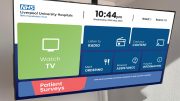Right now, rural providers are facing “a perfect storm.” Rural hospitals continue to close, leaving many residents without access to healthcare. At the same time, the remaining providers struggle to find talent, leaving too many residents without access to the quality healthcare they deserve.
According to the Federal Reserve Bank of Richmond, hospitals nationwide have 105,000 fewer workers than in February 2020. That represents a roughly 2% decline.
Rural providers may feel the pinch more than their urban counterparts, as rural providers often have trouble attracting talent. The result is that rural hospitals are increasingly closing their doors.
According to the Center for Healthcare Quality and Payment Reform, 150 rural hospitals nationwide closed between 2005 and 2019. That trend continued into 2020 and isn’t likely to subside soon.
Even before these closures, rural communities often lacked the same care options, telehealth or specialty doctors. The pandemic brought a new focus on health inequities, as long-disadvantaged communities encountered worse outcomes from COVID-19.
While federal funding has helped slow the trend of closures amid the pandemic, rural providers still face plenty of headwinds, partly because they have higher proportions of vulnerable patients, the elderly and the chronically ill.
Amid unprecedented headwinds, many rural and community practices and hospitals have scaled back their services to maintain some level of operations. Unless this trend is reversed, it could have significant ramifications for the future of care in this space.
Providers have an arrow in their quiver they can turn to close the gap and level the playing field by providing access to care: technology. Increasingly, they’re turning to technology to ensure their staff can focus on delivering quality healthcare to patients without impacting the most pressing needs, especially cybersecurity concerns.
New offerings like telehealth were prominent additions to providers’ offerings amid the pandemic. But more than that, these solutions are pivotal to providing equity and access.
Defining health equity
In recent years, the discussion about health equity has taken centre stage. According to the Centers for Disease Control and Prevention (CDC), health equity is achieved when everyone attains their “full health potential,” and no one is “disadvantaged from achieving this potential because of social position or other socially determined circumstances.”
We’ve known for years that health inequities affect the quality of life, length of life, disability and the rates and severity of diseases. Ultimately, equity depends on access to treatment.
When hospitals are closing, increasing access at first glance might seem complicated.
Technology is a powerful tool that providers can use to help deliver equitable healthcare. But its power is limited if we don’t first achieve “health IT equity.”
Unfortunately, rural hospitals often lag with their technology adoption, whether it’s staffing shortfalls or the perceived cost of implementing them. However, deploying technology and automation to tap into the power data to act proactively can help reduce costs.
Many providers still rely on manual processes, such as pen and paper. Often, they believe it will save money and that they can and will digitize records after the fact.
The reality is it often does not happen.
Eliminating manual processes, whether focused on EHR, patient communications, or analytics access, can help providers save time and money. When they do, they can focus on improving patient outcomes.
These solutions can help reduce the impact of the labour shortage and help providers save money without reducing the focus on patients and the quality of care they receive. The by product is health equity.
Integrating offices with labs and third-party facilities, leveraging a patient portal, and connecting via direct messaging are practical uses of technology. Automating consult and referral letters, patient education, follow-up reminders, and online bill pay will streamline operations and reduce the accounts receivable (A/R) time.
The rural provider landscape
If the COVID-19 pandemic has a silver lining, it served as a catalyst for change. Rural and community practices and hospitals that wanted to evolve before the pandemic found themselves with no choice but to evolve.
In making the change, they saw first-hand how harnessing technology empowered them to simplify EHR and revenue cycle management, ultimately improving the patient experience. Ultimately, these new solutions create an equitable experience for patients and employees.
Solutions that empower healthcare providers to transform their operations digitally will play a key role here. Providers must make strategic investments that reap long-term returns, particularly in cybersecurity, analytics, and cloud-based platforms.
For example, data-driven analytics will empower rural providers to understand better how different social determinants of health (SDOH) impact their population. This understanding will help providers secure grant funding benefiting and elevating community-centric programs.
Additional investments in broadband access at the state and federal levels will help close the digital divide, allowing even more patients to access health services, including via telehealth and patient portals.
Adopting new solutions can help organizations navigate these headwinds and position themselves for future success. Technology is the antidote providers need — in the near term, it will help them improve their financial health, and in the long term, it will help them prepare for and adapt to the changing healthcare landscape.
While the healthcare landscape seems increasingly unpredictable, technology will help providers conserve resources and maintain their focus on patients. Technology must not be an afterthought; instead, it needs to be an integral part of operations.
By Baha Zeidan, CEO of Azalea Health





